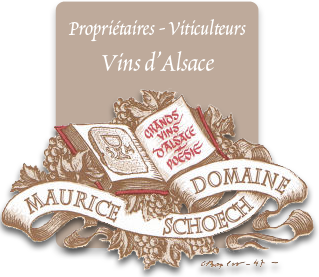Meeting very restrictive production rules, the Grands Crus are the flagship of Alsatian wines production. They draw their origins from the history of the vineyard and forge their character deep in the soil.
Mentioned in the archives of 1338, the Grand Cru Kaefferkopf is the oldest of the demarcated “lieux-dits” in Alsace.
It is a terroir of great geological complexity which is located on the south-east facing slopes above Ammerschwihr.
The roots here plunge deep into the granitic clay faults on soils saturated with calcium and magnesium.
Overlooking the village of Sigolsheim, the Grand Cru Mambourg faces due south on a promontory overlooking the Alsace plain.
It enjoys a privileged sun exposure and is under the influence of the west wind from the Kaysersberg valley.
The marly limestone soil is composed of reddish clayey soil with limestone slabs in which the roots are infiltrated.
The Grand Cru Furstentum is located west of the Mambourg.
Straddling the villages of Kientzheim and Sigolsheim, this shallow, south-facing, marl-calcareous, gritty terroir benefits from the presence of an island of Mediterranean vegetation at its summit.
A little further west still, after passing the valley leading to Riquewihr, the Grand Cru Schlossberg is a granite hillside facing south.
Windy and set back in the valley of Kaysersberg, maturation is later but the steep slope gives it a privileged exposure to the sun.
The first vineyard to arrive in Alsace from the South, 60 km from Ammerschwihr, the Grand Cru Rangen de Thann is a steep south-facing hillside whose poor soil is composed of grauwackes and black volcanic tuff.
The vines here are exposed to extreme conditions with a lot of wind and a high thermal amplitude which forces them to take deep roots.

























